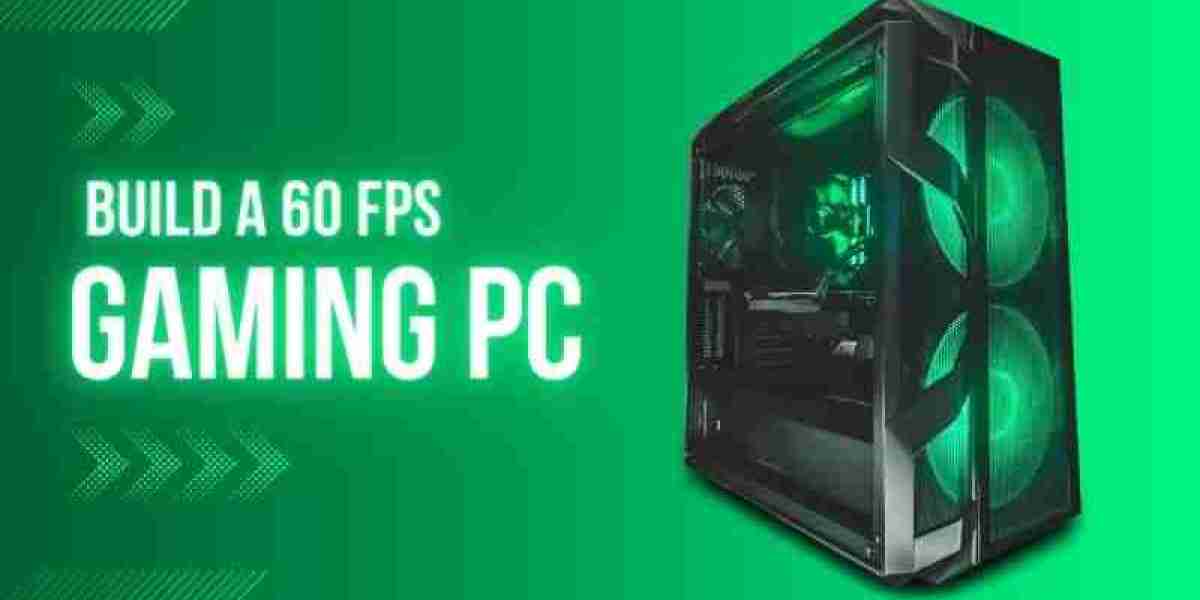Gaming at 60 frames per second (FPS) is the gold standard for a smooth and responsive experience. However, achieving this can be challenging, especially on a tight budget. Fortunately, with careful selection of components, it's possible to build a capable gaming PC without breaking the bank. Here’s how you can build a low-cost gaming PC that can handle modern games at 60 FPS.
Step 1: Define Your Budget
Before diving into the specifics, it's important to set a clear budget. For a low-cost gaming PC, aim for a range of $500-$700. This budget will allow you to get the best balance of performance and affordability.
Step 2: Choose Your Components
Processor (CPU)
A strong CPU is essential for gaming performance. Aim for a mid-range CPU that offers good performance without a high price tag.
- Recommended: AMD Ryzen 5 5600G
- Alternative: Intel Core i5-11400
Graphics Card (GPU)
The GPU is the most critical component for gaming. While high-end GPUs can be expensive, there are budget options that offer excellent performance for 1080p gaming.
- Recommended: NVIDIA GeForce GTX 1660 Super
- Alternative: AMD Radeon RX 580
Motherboard
Choose a motherboard that is compatible with your CPU and offers the necessary features without extra frills that add cost.
- Recommended: MSI B450 TOMAHAWK MAX (for AMD)
- Alternative: ASRock B560M PRO4 (for Intel)
Memory (RAM)
8GB of RAM is the minimum for modern gaming, but 16GB is ideal for better performance and future-proofing.
- Recommended: Corsair Vengeance LPX 16GB (2 x 8GB) DDR4-3200
Storage
An SSD will significantly improve load times and overall system responsiveness. A combination of SSD and HDD can balance speed and storage capacity.
- Recommended: Kingston A2000 500GB NVMe SSD
- Alternative: WD Blue 1TB HDD (for additional storage)
Power Supply Unit (PSU)
A reliable PSU is crucial for system stability. Ensure it provides enough wattage for your components.
- Recommended: EVGA 500 W1, 80+ WHITE 500W
Case
Choose a budget-friendly case that supports your components and provides good airflow.
- Recommended: NZXT H510
Optional: Cooling
If you plan to overclock your CPU or if your case has limited airflow, consider an additional CPU cooler.
- Recommended: Cooler Master Hyper 212 EVO
Step 3: Assemble Your PC
Tools You’ll Need
- Phillips-head screwdriver
- Anti-static wrist strap (optional but recommended)
- Thermal paste (if not included with the CPU cooler)
Assembly Steps
- Install the CPU: Carefully place the CPU into the motherboard socket and secure it.
- Install the RAM: Insert the RAM sticks into the appropriate slots.
- Mount the Motherboard: Secure the motherboard into the case using the standoffs and screws.
- Install the Storage: Mount the SSD and/or HDD into their respective slots.
- Install the PSU: Secure the PSU in the case and connect the necessary power cables.
- Install the GPU: Insert the GPU into the PCIe slot and secure it.
- Connect Cables: Connect all power, data, and peripheral cables.
- Cooling System: Install any additional cooling solutions if needed.
- Final Checks: Double-check all connections and secure any loose cables.
Step 4: Install the Operating System
Download and install a fresh copy of Windows 10 or your preferred OS. Make sure to install all necessary drivers and updates.
Step 5: Optimize Your System
Update Drivers
Ensure all your drivers, particularly for the GPU, are up-to-date. Use software like GeForce Experience or AMD Radeon Software for updates.
Adjust Settings
In your games, start with medium to high settings and adjust based on performance. Turn off unnecessary features like V-Sync and set a frame rate cap to ensure a steady 60 FPS.
Monitor Performance
Use tools like MSI Afterburner to monitor your system’s performance and make any necessary adjustments.
Conclusion
Building a budget gaming PC that can handle 60 FPS gaming is achievable with the right components and careful planning. By following this guide, you can enjoy a smooth gaming experience without spending a fortune. Happy gaming!









